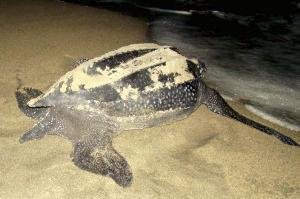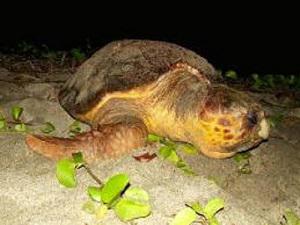Maria Carolina Monterrosa
Other projects
7 Jun 2010
From Turtles Hunters to Conservation Allies: A First Step in Community based Conservation in the Magdalena Area
26 Aug 2011
Proyecto Help Colombia – Community Based Sea Turtle Conservation Program in the Colombian Caribbean
Besides the continuation of the monitoring and tagging program we want to establish the influence of some physical factors in the development of the embryos and hatchling success for Dermochelys coriacea.

This will be the third year working in Tayrona National Park. During this process we begun the Tagging Program at 2007 and we have been able to establish a continued nesting monitoring program in Arrecifes´s Sector. The analysis of the last two reproductive seasons has generated some questions about the incubation process for Dermochelys coriacea and the abiotics factors affecting it. Apparently, there is some disturbing aspect or aspects in the beaches where this specie nests but any kind of information about this aspect doesn´t exist. Because of this lack, we are not able to understand the low hatchling survival after the incubation process in order to take some actions to improve it. With this research we want to establish the influence of physical factors like humidity, temperature and groundwater level in the development of the embryos and hatchling success and be able to identify the best areas of the beaches where to relocate the nests looking for a healthier incubation environment.

To monitor the nesting activity, every night since May to August, Arrecifes´s nesting beaches will be surveyed aiming to intercept any nesting females. All nests found during the reproductive season will be monitored until hatch. Humidity and temperature will be measured each six hours during the entire incubation process using programmable sensors that will be unburied after hatchling. They will be buried in every natural nests of the season at the moment that the female is nesting as well as in the experimental ones that will be distributed along the beaches currently used by Dermochelys coriacea to nest. The groundwater level and rainfall will be measured according with Furler (2005) for nesting success research in Gandoca, Costa Rica. Once the hatchling emerge, the information obtained from the physical factors and the exhumations process, will be analysed together, looking for relations that can explain the interactions between them.
Obtained information will be shared with park staff within the Third workshop in management techniques in order to explain its implications for leatherback turtle conservation at the area.